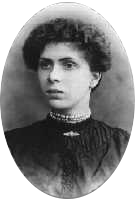Obituary: Umberto Tommasini (1896-1980)
Born into a working class socialist family in Trieste in 1896, Umberto Tommasini started work as a metal work apprentice at an early age. At the age of thirteen he took part in his first demonstration, a protest against the execution in Barcelona of the anarchist educator Francisco Ferrer. During the first world war, Tommasini was a POW in Mauthausen. Returning to Trieste in 1918, he joined the anarchist movement. He played on an active part in the various struggles of the heated years that followed, especially in direct action against strike-breakers and the rising wave of fascist attacks. In 1925 he was involved in Gino Lucetti’s abortive assassination attempt on Mussolini’s life. In 1926 he was among the first anti-fascists consigned to internal exile on Italy’s prison islands.
For six years he was a ‘guest’ on Ustica and Ponza. In 1932 he slipped across the border into exile in France where he was active in the exiles’ anti-fascist struggle. When the Spanish revolution broke out, he went to Barcelona to serve with the CNT-FAI’s Ascaso Column on the Aragon front. In 1937 he was arrested by the Stalinists during an attempted sabotage of Francoist shipping, but managed to escape from a CP prison in Valencia. Tommasini refused to submit to the militarisation of the militias as the communists insisted and returned to France. He was arrested there in 1940 and interned in the Vernet d’Ariege concentration camp, whence he was extradited to Italy. From 1941 to 1943 he was one of the hundreds of anarchists in confinement on the island of Ventotene. After the war he returned to Trieste, where he joined with other anarchists who had been through the experience of exile and partisan activities, to found the Gruppo Germinal and its journal of the same name. Always to be found in the front line of anarchist activity, he was sentenced by the Allied military government in 1954 for anarchist propaganda.[1]
In the wake of the libertarian outbursts of 1968, Tommasini was active and available for talks with interested young people; his group’s numbers swelled, its premises re-opened and its activities redoubled. Tommasini was always among the most active of its members. At the age of 74, in 1970, he repulsed a fascist attack on the group’s premises, chasing several of the attackers into the streets and seeing off several others. In 1972 he took over from another anarchist militant of long-standing, Alfonso Failla, as editor in chief of ‘Umanita Nova’ which led to fresh charges being brought and new sentences imposed upon him. In his eighties, he took part in anti-militarist marches and the FAI Congress as well as his group’s local activities. Some time ago he retired to Vivaro (Pordenone) to convalesce. He died there on 22nd August 1980;[2] his funeral was attended by a hundred of his comrades, most of them young people. Flags and tributes were carried.
From Black Flag, vol.6 no.6 (Jan. 1981)
Notes,
1, He and 2 others were sent to prison after being charged with putting up abusive posters inciting police to disobey orders.
2, corrected from 15th in original text.
[Image: Police mugshot from 1925, from http://www.anarcopedia.org/index.php/Umberto_Tommasini]
In KSL: Bulletin of the Kate Sharpley Library No. 117, April 2025
Subjects:
- Anarchism
- Anti-fascism
- Anti-militarism
- Federazione Anarchica Italiana FAI
- France
- History of Anarchism
- Italian anarchists outside Italy
- Italy
- Lives (biography, autobiography)
- Printing and Publishing
- Prison
- Repression
- Resistance to Mussolini
- Spain
- Spanish Revolution and Spanish Civil War SCW
- Tommasini, Umberto (1896-1980)
- Trieste
Similar items
- KSL: Bulletin of the Kate Sharpley Library No. 117, April 2025.
- Sacchetti, Giorgio and Victor Serge. Otello Gaggi, An Exemplary Case (an Italian anti-fascist in Russia).
- Marzocchi, Umberto. Remembering Spain : Italian anarchist volunteers in the Spanish Civil War (second edition).
- Marzocchi, Umberto. Remembering Spain : Italian anarchist volunteers in the Spanish Civil War (second edition).
- Pietro Di Paola: The Knights-Errant of Anarchy: London and the Italian Anarchist Diaspora 1880-1917 (Liverpool University Press, 2013).
